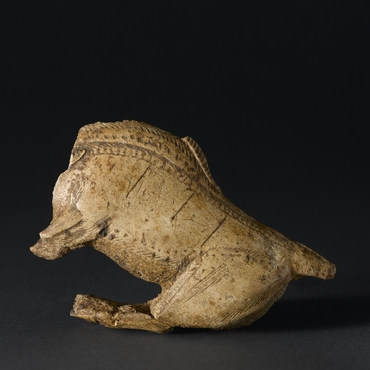
- Home
- Discover the sculptured rock shelters
- Life 15 000 years ago
- The Symbolic Evidence
- Portable art and decorative items
Portable art is defined as an art whose medium is portable, which includes both sculptures in the round and moulded clay along with weapons and tools in hard animal materials (harpoons, sagaie points, propellants, spatulas, polishers, half-round rods, pierced sticks, and so on), stone plates, pebbles and bones. These materials are often engraved, or more rarely painted, with geometric and/or figurative elements (animals, humans). The abundance and variety of Magdalenian portable art (in terms of media, techniques, themes and graphic conventions) play a critical role in describing this culture.
The Magdalenians showed unprecedented creativity in their creation of elements of adornment, seeking out new materials and inventing new forms. They augmented a common background of Palaeolithic animal teeth and shells with beads and pendants of various kinds.
Although ethnology offers clues as to the role of adornment (an individual's claim to membership in a group, to social status and/or to identity), we are ignorant as to its meaning in the Palaeolithic. Elements of adornment found in funerary contexts appear to suggests that men, women and children wore them, regardless of sex or age.
Portable art and decorative items attest to the existence of different regional cultural groups. For example, the contours découpés and perforated discs are characteristic of the Pyrenean Middle Magdalenian while engraved horse teeth is a regional indicator of groups in Poitou and Charente.


